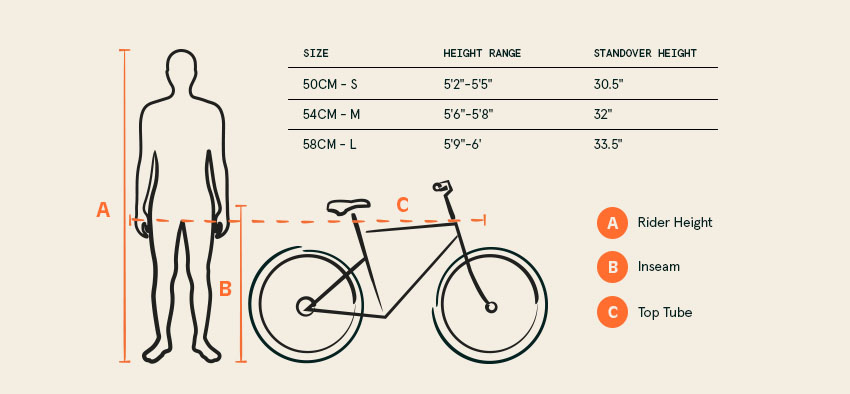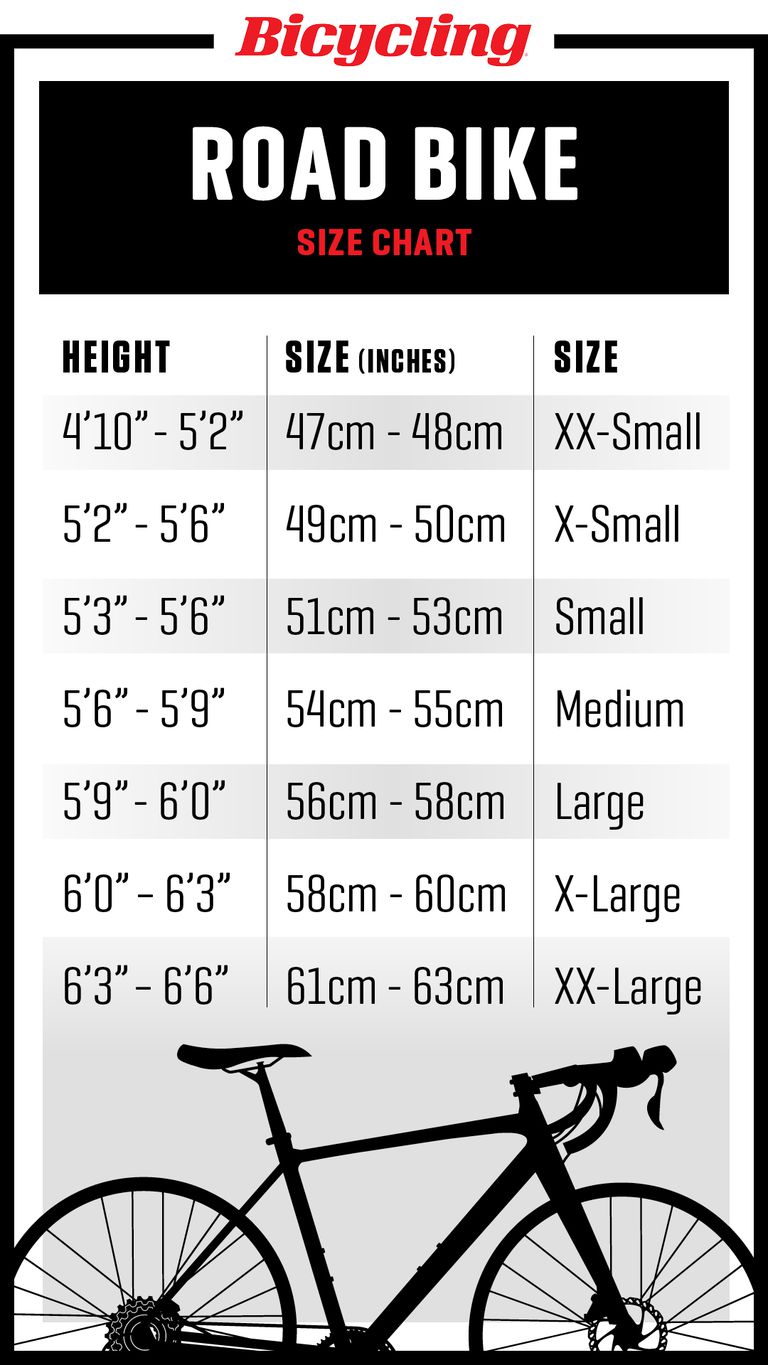Why Proper Bike Sizing Matters
Proper bike sizing is crucial for comfort, efficiency, and safety while riding a road bike. A well-fitting bike can improve performance, reduce the risk of injury, and enhance overall riding experience. When a bike is too small or too large, it can lead to discomfort, fatigue, and decreased control, ultimately affecting the rider’s ability to perform at their best.
One of the primary reasons proper bike sizing is essential is that it allows riders to maintain a comfortable and efficient riding position. When the bike is the correct size, riders can achieve a neutral spine angle, with their hands, hips, and feet in alignment. This position enables riders to generate maximum power, while minimizing the risk of injury to their back, neck, and joints.
In addition to comfort and efficiency, proper bike sizing also plays a critical role in safety. A bike that is too small or too large can be difficult to control, particularly at high speeds or in technical terrain. When a rider is unable to control their bike, they are more likely to experience a crash or lose control, which can result in serious injury or even death.
Furthermore, proper bike sizing can also impact a rider’s performance. When a bike is the correct size, riders can optimize their pedaling technique, generating more power and speed with less effort. This, in turn, can lead to improved overall performance, enabling riders to tackle challenging terrain and achieve their riding goals.
So, how do you measure the size of a road bike to ensure a proper fit? The process begins with understanding the key components of bike sizing, including standover height, top tube length, and seat tube length. By taking accurate measurements and using online bike size calculators, riders can determine their ideal bike size and find a bike that meets their specific needs.
Understanding Road Bike Sizing Terminology
When it comes to determining the size of a road bike, there are several key terms to understand. These terms include standover height, top tube length, and seat tube length. Each of these measurements plays a crucial role in determining the overall size of the bike and ensuring a proper fit for the rider.
Standover height refers to the distance between the ground and the top tube of the bike. This measurement is critical in determining the rider’s ability to safely stand over the bike with both feet flat on the ground. A general rule of thumb is to have at least 1-2 inches of clearance between the rider’s crotch and the top tube.
Top tube length, on the other hand, refers to the horizontal distance between the head tube and the seat tube. This measurement affects the rider’s ability to maintain a comfortable and efficient riding position. A longer top tube can provide more stability and control, while a shorter top tube can make the bike more agile and responsive.
Seat tube length refers to the vertical distance between the bottom bracket and the top of the seat tube. This measurement affects the rider’s ability to maintain a comfortable and efficient pedaling position. A longer seat tube can provide more power and efficiency, while a shorter seat tube can make the bike more compact and easier to handle.
When determining the size of a road bike, it’s essential to consider these measurements in conjunction with one another. By understanding how these measurements interact, riders can find a bike that provides a comfortable and efficient riding position, while also meeting their specific needs and preferences.
For example, a rider who is 5’10” with a 32″ inseam may require a bike with a standover height of 31-32 inches, a top tube length of 55-56 cm, and a seat tube length of 52-53 cm. By using online bike size calculators and consulting with a professional bike fitter, riders can determine their ideal bike size and find a bike that meets their specific needs.
How to Measure Your Body for a Road Bike
To determine your ideal bike size, it’s essential to take accurate measurements of your body. This will help you find a bike that fits comfortably and efficiently, allowing you to ride with confidence and performance. Here’s a step-by-step guide on how to measure your body for a road bike:
1. **Height**: Measure your height in inches or centimeters. This will give you a general idea of the bike size you need. For example, if you’re 5’10” (178 cm), you’ll likely need a bike with a standover height of 31-32 inches (79-81 cm).
2. **Inseam**: Measure the length of your inseam by placing a book or a ruler between your legs, with the spine of the book or the edge of the ruler against your crotch. This will give you an accurate measurement of your inseam. For example, if your inseam is 32 inches (81 cm), you’ll likely need a bike with a seat tube length of 52-53 cm.
3. **Arm length**: Measure the length of your arm from the center of your back to your wrist. This will help you determine the ideal top tube length for your bike. For example, if your arm length is 24 inches (61 cm), you’ll likely need a bike with a top tube length of 55-56 cm.
4. **Leg length**: Measure the length of your leg from the top of your thigh to your ankle. This will help you determine the ideal seat tube length for your bike. For example, if your leg length is 43 inches (109 cm), you’ll likely need a bike with a seat tube length of 52-53 cm.
Once you have these measurements, you can use online bike size calculators to determine your ideal bike size. These calculators take into account your height, inseam, arm length, and leg length to provide a recommended bike size.
For example, if you’re 5’10” (178 cm) with a 32-inch (81 cm) inseam, 24-inch (61 cm) arm length, and 43-inch (109 cm) leg length, a bike size calculator may recommend a bike with a standover height of 31-32 inches (79-81 cm), a top tube length of 55-56 cm, and a seat tube length of 52-53 cm.
By taking accurate measurements and using online bike size calculators, you can find a bike that fits comfortably and efficiently, allowing you to ride with confidence and performance.
Using Bike Size Charts to Find Your Perfect Fit
Bike size charts are a valuable tool for finding your perfect bike fit. These charts provide a general guideline for determining the ideal bike size based on your height, inseam, and other body measurements. However, it’s essential to understand that bike size charts can vary between manufacturers, and it’s crucial to consider these differences when selecting a bike size.
Manufacturer-specific size charts take into account the unique design and geometry of each bike model. For example, a Trek Domane size chart may recommend a different bike size than a Specialized Tarmac size chart for the same rider. This is because each manufacturer has its own specific design and geometry, which can affect the bike’s fit and performance.
To use a bike size chart effectively, follow these steps:
1. **Determine your height and inseam**: Measure your height and inseam to determine your ideal bike size. Use a bike size chart to find the corresponding bike size based on your measurements.
2. **Consider the manufacturer’s size chart**: Look for the manufacturer’s size chart for the specific bike model you’re interested in. Compare the recommended bike size to your measurements to ensure a good fit.
3. **Check the bike’s geometry**: Consider the bike’s geometry, including the standover height, top tube length, and seat tube length. These measurements can affect the bike’s fit and performance.
4. **Test ride the bike**: Once you’ve determined your ideal bike size, test ride the bike to ensure a comfortable and efficient fit. Pay attention to the bike’s handling, comfort, and performance.
By using bike size charts and considering the manufacturer’s specific design and geometry, you can find a bike that fits comfortably and efficiently, allowing you to ride with confidence and performance.
For example, if you’re 5’10” (178 cm) with a 32-inch (81 cm) inseam, you may be recommended a size 56 or 58 cm bike based on the manufacturer’s size chart. However, it’s essential to test ride the bike to ensure a comfortable and efficient fit, as the bike’s geometry and design can affect the fit and performance.
Real-World Examples: Sizing Up Popular Road Bikes
To illustrate how to apply bike sizing principles, let’s consider two popular road bikes: the Trek Domane and the Specialized Tarmac. Both bikes are designed for performance and comfort, but they have distinct sizing requirements.
**Trek Domane**: The Trek Domane is a versatile road bike designed for endurance and comfort. To determine the ideal bike size for the Domane, consider the following measurements:
* Standover height: 31-32 inches (79-81 cm)
* Top tube length: 55-56 cm
* Seat tube length: 52-53 cm
Based on these measurements, a rider who is 5’10” (178 cm) with a 32-inch (81 cm) inseam would likely fit a size 56 or 58 cm Domane.
**Specialized Tarmac**: The Specialized Tarmac is a high-performance road bike designed for speed and agility. To determine the ideal bike size for the Tarmac, consider the following measurements:
* Standover height: 30-31 inches (76-79 cm)
* Top tube length: 54-55 cm
* Seat tube length: 51-52 cm
Based on these measurements, a rider who is 5’10” (178 cm) with a 32-inch (81 cm) inseam would likely fit a size 54 or 56 cm Tarmac.
As you can see, the sizing requirements for the Domane and Tarmac differ slightly, despite both bikes being designed for road riding. This highlights the importance of considering the specific bike model and its unique sizing requirements when determining your ideal bike size.
By applying bike sizing principles and considering the specific measurements of each bike, you can find a bike that fits comfortably and efficiently, allowing you to ride with confidence and performance.
Additional Factors to Consider When Sizing a Road Bike
When sizing a road bike, there are several additional factors to consider beyond the basic measurements of standover height, top tube length, and seat tube length. These factors can affect the bike’s fit and performance, and should be taken into account when selecting a bike size.
**Riding style**: Different riding styles require different bike fits. For example, a rider who prefers a more aggressive position may require a smaller bike size to achieve the desired fit, while a rider who prefers a more upright position may require a larger bike size.
**Terrain**: The terrain you ride on can also affect the bike’s fit. For example, a rider who frequently rides on rough or hilly terrain may require a bike with a more relaxed geometry to provide stability and control.
**Personal preference**: Ultimately, the bike’s fit should be determined by your personal preference. Consider your riding style, terrain, and personal comfort level when selecting a bike size.
**Handlebar height and width**: The height and width of the handlebars can also affect the bike’s fit. A rider who prefers a more upright position may require a taller handlebar, while a rider who prefers a more aggressive position may require a shorter handlebar.
**Saddle height and fore-and-aft position**: The height and fore-and-aft position of the saddle can also affect the bike’s fit. A rider who prefers a more aggressive position may require a saddle that is positioned further forward, while a rider who prefers a more upright position may require a saddle that is positioned further back.
By considering these additional factors, you can find a bike that fits comfortably and efficiently, allowing you to ride with confidence and performance.
For example, a rider who is 5’10” (178 cm) with a 32-inch (81 cm) inseam may require a bike with a standover height of 31-32 inches (79-81 cm), a top tube length of 55-56 cm, and a seat tube length of 52-53 cm. However, if this rider prefers a more aggressive position, they may require a smaller bike size to achieve the desired fit.
Common Mistakes to Avoid When Sizing a Road Bike
When sizing a road bike, there are several common mistakes to avoid. These mistakes can lead to a poor fit, reduced comfort, and decreased performance.
**Relying too heavily on standover height**: Standover height is an important measurement, but it’s not the only factor to consider when sizing a road bike. Make sure to also consider top tube length, seat tube length, and other measurements to ensure a proper fit.
**Neglecting to consider top tube length**: Top tube length is a critical measurement that can affect the bike’s fit and performance. Make sure to consider this measurement when sizing a road bike, as a bike with a top tube that is too long or too short can be uncomfortable and affect performance.
**Not considering riding style**: Riding style can affect the bike’s fit and performance. Make sure to consider your riding style when sizing a road bike, as a bike that is too aggressive or too upright can be uncomfortable and affect performance.
**Not taking into account personal preference**: Personal preference can also affect the bike’s fit and performance. Make sure to consider your personal preference when sizing a road bike, as a bike that is too small or too large can be uncomfortable and affect performance.
**Not using online bike size calculators**: Online bike size calculators can be a useful tool when sizing a road bike. Make sure to use these calculators to ensure a proper fit and to avoid common mistakes.
**Not test riding the bike**: Test riding the bike is an important step in ensuring a proper fit. Make sure to test ride the bike before purchasing to ensure that it is comfortable and performs well.
By avoiding these common mistakes, you can ensure a proper fit and optimal performance from your road bike.
For example, a rider who is 5’10” (178 cm) with a 32-inch (81 cm) inseam may require a bike with a standover height of 31-32 inches (79-81 cm), a top tube length of 55-56 cm, and a seat tube length of 52-53 cm. However, if this rider neglects to consider top tube length, they may end up with a bike that is too long or too short, leading to a poor fit and reduced performance.
Getting a Professional Bike Fit: Is it Worth It?
A professional bike fit can be a valuable investment for any road cyclist. By getting a professional bike fit, you can ensure that your bike is properly sized and adjusted to your body, which can improve comfort, efficiency, and performance.
A professional bike fit typically involves a thorough analysis of your body and riding style, as well as a detailed assessment of your bike’s geometry and fit. A professional bike fitter will use this information to make adjustments to your bike’s saddle height, handlebar height, and other components to ensure a proper fit.
The benefits of a professional bike fit are numerous. For one, it can help to reduce the risk of injury by ensuring that your bike is properly sized and adjusted to your body. This can be especially important for riders who are prone to back or neck pain, as a poorly fitting bike can exacerbate these issues.
In addition to reducing the risk of injury, a professional bike fit can also improve comfort and efficiency. By ensuring that your bike is properly sized and adjusted to your body, you can reduce fatigue and discomfort on long rides, and improve your overall performance.
Furthermore, a professional bike fit can also help to optimize your riding position. By adjusting the saddle height, handlebar height, and other components of your bike, a professional bike fitter can help you to achieve a more aerodynamic and efficient riding position, which can improve your performance and reduce your risk of injury.
While a professional bike fit may seem like an unnecessary expense, it can be a valuable investment for any road cyclist. By ensuring that your bike is properly sized and adjusted to your body, you can improve comfort, efficiency, and performance, and reduce your risk of injury.
For example, a rider who is 5’10” (178 cm) with a 32-inch (81 cm) inseam may require a bike with a standover height of 31-32 inches (79-81 cm), a top tube length of 55-56 cm, and a seat tube length of 52-53 cm. A professional bike fitter can help to ensure that the bike is properly sized and adjusted to the rider’s body, which can improve comfort, efficiency, and performance.








